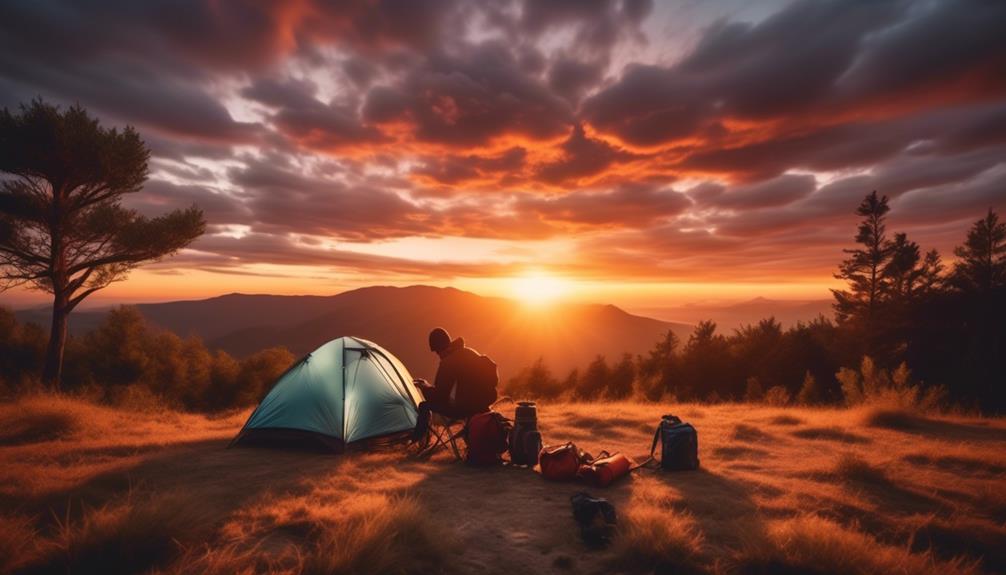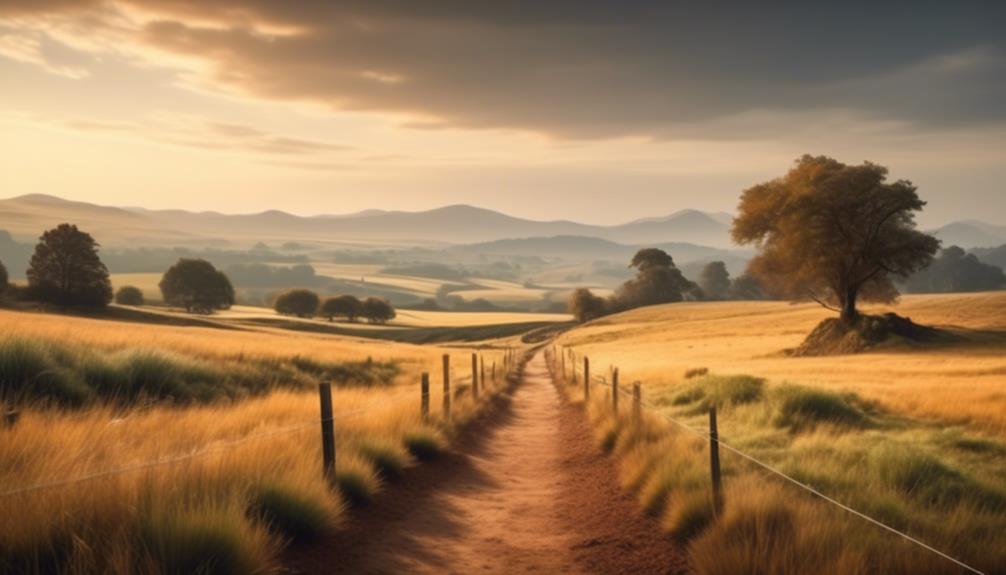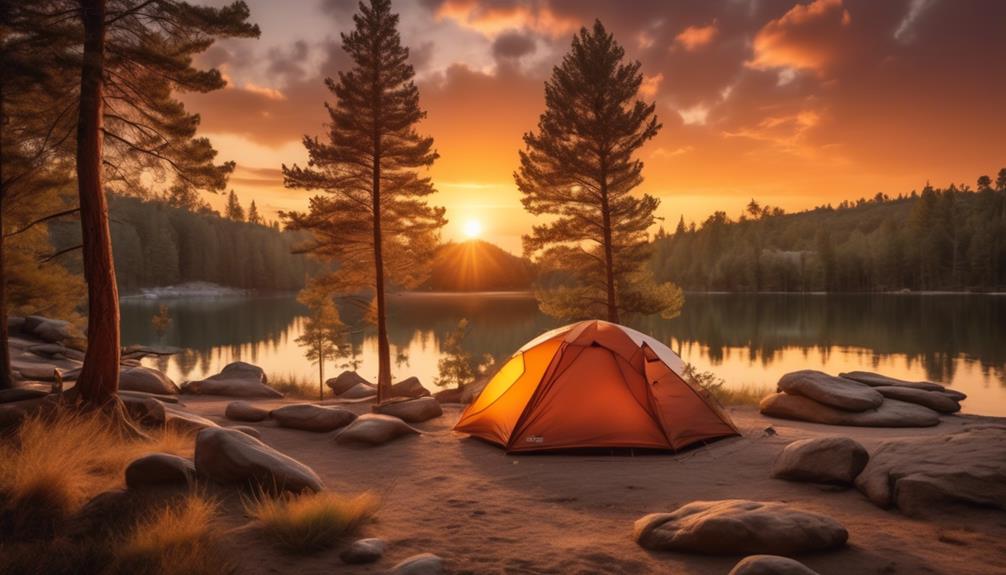Why Are Camping Photography Tips and Tricks Important?
So, you're gearing up for your next camping adventure, and you're eager to capture the breathtaking scenery and memorable moments.
But have you ever felt frustrated when your photos don't quite do justice to the stunning views and experiences? You're not alone.
Camping photography tips and tricks are essential for elevating your outdoor photography game and ensuring that you can truly capture the essence of your camping trips.
From mastering lighting techniques to composing captivating outdoor shots, there are numerous ways that honing your camping photography skills can significantly enhance your photography experience.
Importance of Camping Photography

Capturing memorable moments through photography enhances your camping experience by preserving the beauty of nature and the joy of outdoor activities. When you're out in the wilderness, surrounded by stunning landscapes and engaging in exciting adventures, it's natural to want to capture those special moments.
Photography allows you to freeze those moments in time, creating lasting memories that you can revisit whenever you want.
Photography also serves as a way to share your experiences with others. Sharing your camping photos can inspire friends and family to embark on their own outdoor adventures, spreading the love for nature and the great outdoors. Additionally, it allows you to look back on past trips and reminisce about the fun times you had, evoking feelings of nostalgia and gratitude.
Moreover, photography can help you develop a deeper connection with nature. By actively seeking out beautiful and interesting subjects to photograph, you become more attuned to your surroundings. You start noticing the small details and appreciating the intricacies of the natural world. This heightened awareness can lead to a greater appreciation for the environment and a desire to preserve it for future generations.
In essence, camping photography isn't just about taking pictures; it's about capturing the essence of your outdoor experiences and preserving them for years to come. Whether it's a breathtaking sunrise, a peaceful campsite, or the joy on your friends' faces as they roast marshmallows over a crackling fire, photography allows you to hold onto these precious moments and share them with the world.
Lighting Techniques for Camping Photos
To capture stunning camping photos, it's essential to master lighting techniques that enhance the natural beauty of your surroundings.
When taking camping photos, consider the time of day for the best lighting. The golden hours, shortly after sunrise and before sunset, provide soft, warm light that can add a magical touch to your photos. During these times, the light is less harsh, creating a more pleasing atmosphere. Experiment with different angles to make the most of the golden light, casting long shadows and creating depth in your images.
In addition to the golden hours, pay attention to the quality of light. Soft, diffused light on overcast days can be just as beautiful as direct sunlight. Cloud cover acts as a natural diffuser, creating even, flattering light that's perfect for capturing the serene beauty of a campsite or the details of natural elements. Embrace the moody atmosphere that overcast skies can offer, and use it to your advantage to create compelling and unique camping photos.
When working with artificial light sources, such as campfires or lanterns, be mindful of the color temperature. The warm, flickering light of a campfire can add an inviting glow to your photos, but it's essential to adjust your camera settings to account for the different color temperature. Experiment with longer exposure times to capture the movement of the flames, creating a dynamic and atmospheric effect in your camping photos.
Mastering these lighting techniques will help you elevate your camping photography and showcase the natural beauty of the great outdoors.
Composition Tips for Outdoor Photography

As you explore composition tips for outdoor photography, consider how different lighting techniques can enhance the natural beauty of your surroundings and contribute to the overall impact of your images.
One important aspect of composition is the rule of thirds. Imagine a tic-tac-toe grid superimposed over your scene, and try placing the main subject or focal point at one of the intersecting points. This creates a more dynamic and visually appealing image.
Additionally, leading lines can guide the viewer's eye through the photo, drawing attention to specific elements in the landscape. Look for natural elements like rivers, paths, or tree branches that can act as leading lines, adding depth and perspective to your images.
Another key consideration is the use of framing within your composition. Incorporating natural elements such as overhanging tree branches, doorways, or rock formations can frame the main subject, drawing attention to it and adding depth to the image. Pay attention to the foreground, midground, and background of your composition to create a sense of depth and dimension in your outdoor photographs.
Furthermore, be mindful of the overall balance in your photos. Consider the visual weight of different elements and strive for a balanced composition. This could involve positioning a visually heavy subject, such as a large tree or mountain, against a lighter background to create equilibrium within the frame.
Capturing Campfire Moments
Amidst the crackling flames and the warmth of camaraderie, you can create captivating images that encapsulate the essence of campfire moments. Campfires offer a myriad of photo opportunities that can evoke a sense of nostalgia and adventure. Here are some tips and tricks to help you capture the magic of campfire moments:
- Play with Light: Experiment with different light sources to add depth and drama to your campfire photos. You can use the warm glow of the fire itself, or incorporate other light sources such as lanterns or headlamps to create interesting lighting effects.
- Capture Emotions: Look for candid moments of laughter, storytelling, or quiet contemplation around the campfire. These genuine emotions and interactions can add a layer of authenticity to your photos, making them more compelling and relatable.
- Utilize Silhouettes: Use the silhouette of people against the backdrop of the fire to create visually striking images. Silhouettes can add a sense of mystery and intrigue to your campfire photos, emphasizing the human connection to the primal allure of fire.
- Focus on Details: Zoom in on the smaller details that define the campfire experience, such as the crackling wood, glowing embers, or the intricate patterns of the flames. These details can showcase the sensory aspects of the campfire, transporting viewers to the heart of the experience.
Utilizing Natural Elements in Camping Shots

When capturing camping shots, incorporate natural elements such as trees, water, and rock formations to add a sense of depth and connection to the environment. Including these elements in your photos can help create a more immersive and authentic camping experience for your viewers.
Utilizing trees in your compositions can provide a natural frame and lead the viewer's eye into the scene, creating a sense of depth and dimension. Additionally, trees can add texture, color, and a feeling of wilderness to your camping shots.
Water is another natural element that can greatly enhance your camping photographs. Whether it's a serene lake, a rushing river, or a cascading waterfall, water adds a dynamic and captivating element to your images. It can reflect the surrounding landscape, adding visual interest and creating a sense of tranquility.
Rock formations also offer a unique opportunity to incorporate natural elements into your camping shots. They can serve as focal points, anchors, or leading lines, guiding the viewer's gaze and adding a rugged, earthy feel to your compositions. By positioning your subjects or campsite against these natural backdrops, you can create visually compelling and context-rich images that convey the essence of camping in the great outdoors.
Editing and Enhancing Camping Photos
To elevate your camping photography, consider enhancing your shots through editing techniques that bring out the natural elements you've captured, adding depth and vibrancy to your images. Editing and enhancing your camping photos can significantly improve the overall quality of your photographs, making them more visually appealing and memorable.
Here are some tips and tricks to help you make the most out of your camping photos:
- Adjusting Contrast and Saturation: By carefully adjusting the contrast and saturation levels, you can make the colors in your camping photos pop, giving them a more vibrant and dynamic look.
- Applying Sharpening and Clarity: Adding a touch of sharpening and clarity can help bring out intricate details in the natural elements of your camping shots, such as the texture of tree barks, leaves, or the rough surface of a mountain.
- Removing Distractions: During the editing process, you can remove any distracting elements that may have inadvertently found their way into your photos, allowing the focus to remain on the beauty of the camping scene.
- Adding Creative Effects: Experimenting with creative effects like vignetting or selective coloring can enhance the mood and atmosphere of your camping photos, adding an artistic touch to your images.
Frequently Asked Questions
What Are Some Recommended Camera Settings for Capturing Camping Photos in Low Light Conditions?
For capturing camping photos in low light conditions, set your camera to a wide aperture for better light intake, increase ISO for brightness, and use a slower shutter speed for longer exposure. Experiment with these settings for optimal results.
How Can I Effectively Capture the Starry Night Sky in My Camping Photos?
To effectively capture the starry night sky in your camping photos, use a tripod to keep the camera steady, adjust your settings for a longer exposure, and use a wide aperture to let in more light.
Are There Any Specific Considerations for Photographing Wildlife While Camping?
When photographing wildlife while camping, remember to respect their space and avoid disturbing them. Use a telephoto lens for a safe distance, and be patient for the perfect shot. Be mindful of your surroundings and the animals' behavior.
What Are Some Creative Ways to Incorporate Camping Gear Into My Photography Compositions?
When taking photos while camping, try using camping gear as props to add interest and context to your compositions. Incorporate tents, campfires, and cooking equipment to create unique and engaging shots.
Can You Recommend Any Affordable Editing Software for Enhancing Camping Photos?
You can enhance your camping photos with affordable software like Adobe Lightroom or Snapseed. These programs offer a range of editing tools for adjusting lighting, colors, and sharpness, allowing you to bring out the best in your outdoor shots.
Conclusion
So, whether you're a seasoned photographer or just starting out, using these camping photography tips and tricks can make a huge difference in the quality of your outdoor photos.
From capturing the warm glow of a campfire to utilizing the natural elements around you, these techniques will help you create stunning and memorable camping photos.
Don't forget to edit and enhance your photos to truly make them stand out.
Happy camping and happy shooting!
